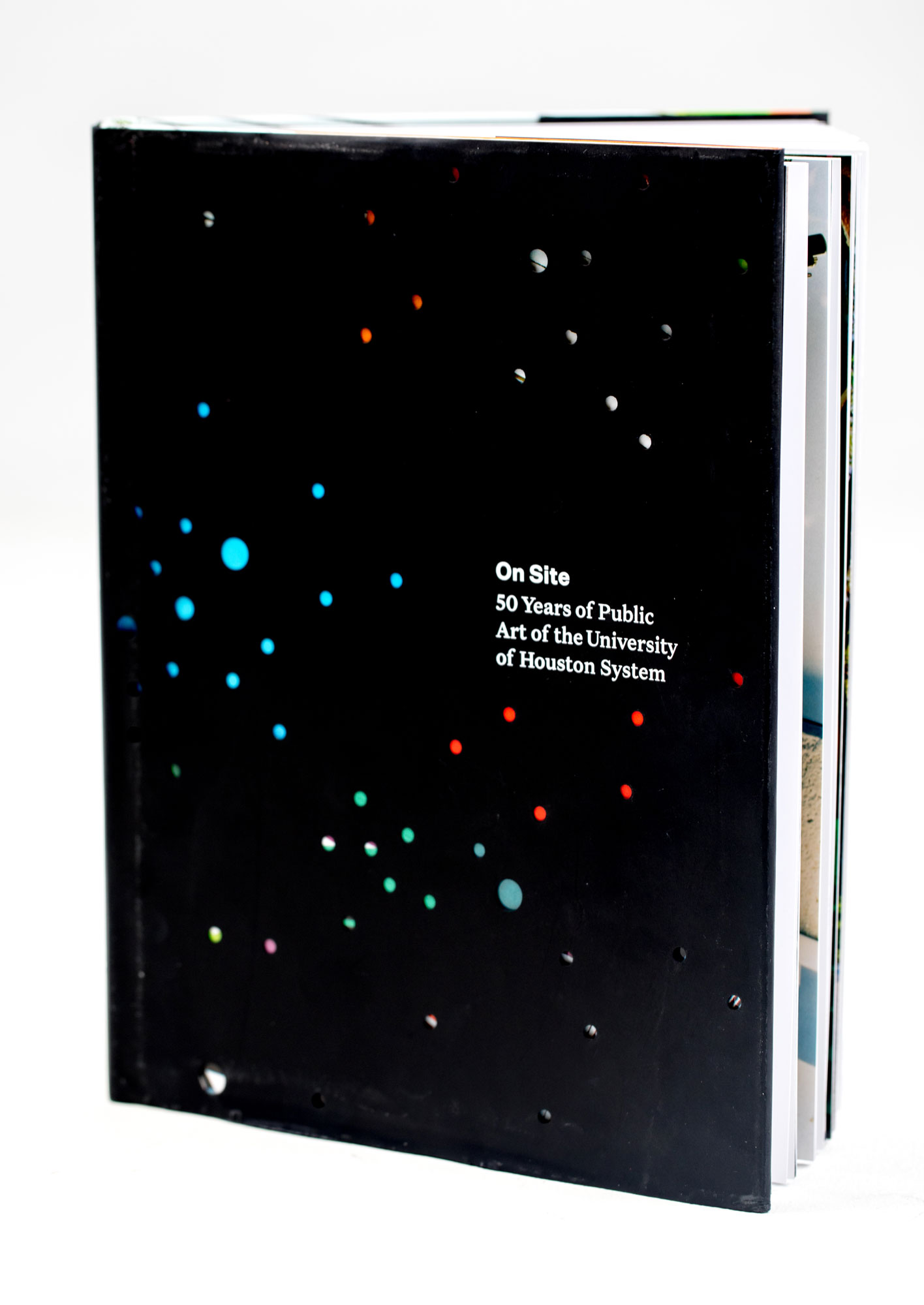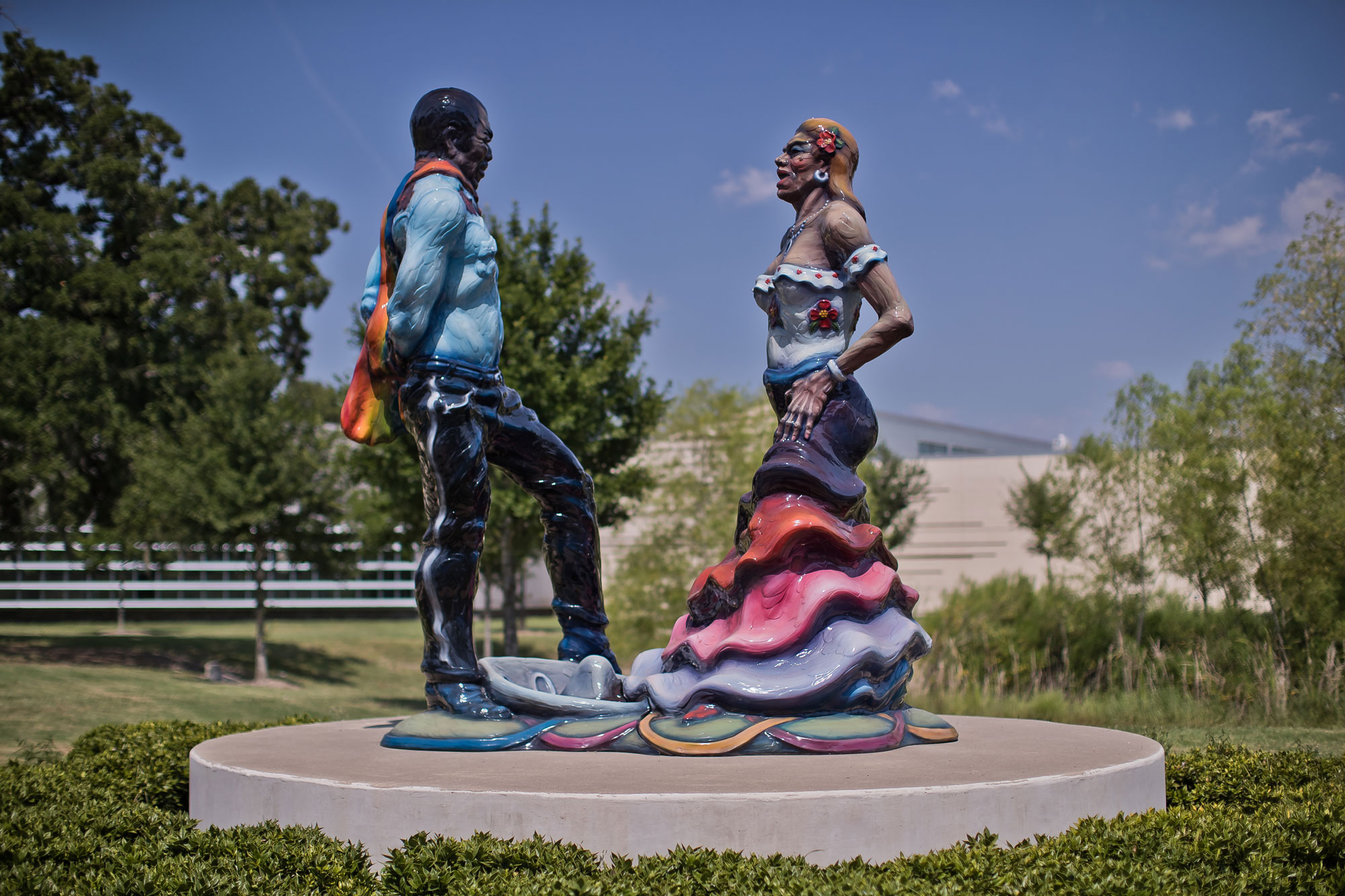
Public Art of the UH System celebrates 50 years
The Public Art of the University of Houston System (Public Art UHS) celebrated its 50th anniversary this year. Included in that celebration is the Nov. 6 release of the book, “On Site: 50 Years of Public Art of the University of Houston System,” which commemorates the University of Houston (UH) as the first Texas university to initiate a public art program in 1966, which was formally approved in 1969.

The Public Art UHS program consists of allocating 1% of new construction costs to be set aside to collect and commission works of art. This applies to all campuses within the University of Houston System (UHS). The program was conceived to give a wide variety of artists the opportunity to engage a diverse audience through public art.
Maria Gaztambide, director and chief curator of Public Art UHS, explains that the program’s art selection process is inherently democratic, transparent and in full alignment with Texas’ open records policies. Public Art UHS works with the UHS System-wide Public Art Committee (UHSPAC) to select local, national and international artists whose proposals fit their mission and meet the required criteria: appropriateness to the location, durability, ease of maintenance, ability to fabricate and install artwork within project budget and timeframe. Gaztambide said high visibility and interest, as well as the ability to relate to a diverse demographic and complement the existing collection, are also important factors.
As the program continues to expand, the Public Art UHS plans to better curate the collections for each university within the system while strengthening their individual development over time. While the current collection holds nearly 700 works of art, Public Art UHS hopes to refine its overall aesthetic as a whole.
“Our overarching vision for Public Art is to create a collaborative ecosystem where cutting-edge public art, higher education and diverse communities converge,” Gaztambide said. “At the same time we are intentionally designing programs and activities that provide the space and support for artists to enhance their practice through direct involvement with students, and for students to acquire hands-on skills through direct interaction with artists and their work. This is a philosophy we are weaving into all of our activities and programs, particularly as we further develop the collection.”
Gaztambide said the reasoning behind a concerted theme-based approach to collection development is two-fold: 1) to give more tangible shape to the collection so every piece belongs and the whole is greater than the sum of the parts, and 2) to clearly define areas for each location within UHS in order to create opportunities for differentiated art destinations and experiences responsive to the strengths of each site; ultimately driving art, people and ideas across the system.
Percent-for-art programs have been around since 1959 in the United States, and there are currently more than 350 programs. Beth Merfish, assistant professor of art history at the University of Houston-Clear Lake (UHCL), believes the significance of a university system having a public art program is important because it speaks to the fact of the college prioritizing creative expression and shows the community what is being done on college campuses.

Merfish explained that site-specific public art often requires artists to visit the intended sites where the work will be installed, mirroring the way in which people from the United States and beyond travel to Houston as a center.
Merfish said the diverse group of artists whose work is included in the UH System collection further reflects the diversity of our city and many of the objects represent important moments in the university’s history. She hopes that the celebration of public art creates conversations on campus about future directions for the program and the way in which we can be good stewards of the objects we have and add to the collection thoughtfully and with intention.
Considering UHCL’s rich history with NASA and space-related industries that developed around Johnson Space Center, Gaztambide said the public art program for UHCL will focus on work that intersects art with the fields of science, technology, engineering and math. Public Art UHS will seek artists who question the relation between art and technology by incorporating research, experimentation and new media in their art practice, as well as being technology-focused or scientifically innovative.
“Moving forward, Public Art will seek to work with superior artists who — through their unique life experiences, exceptional creativity, or commitment to pushing public art into new and emerging territories — help us advance this vision and critical goals,” Gaztambide said. “We strongly believe that in its interventions in day-to-day life, public art in and beyond our university campuses is charged with challenging people to see, react and even doubt. Over time, repetitive contact with art carries the potential to establish more meaningful connections and to build community in the process.”
For information on the collection and upcoming events, visit the Public Art UHS.
